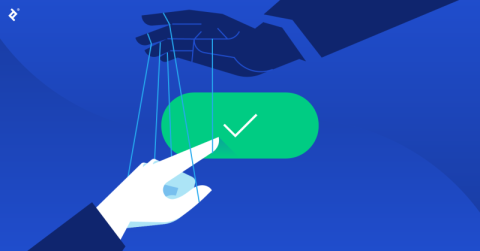
In the realm of digital interfaces and online interactions, the concept of user experience holds significant importance. Designers and developers strive to create seamless and user-friendly interfaces that enhance the overall online experience. However, in the pursuit of engagement and conversion, some practices emerge that manipulate user behaviour in ways that may not always be ethical. These practices are termed as "dark patterns."
In recent years, the concept of dark patterns has gained significant attention in the field of user experience and digital ethics. As more and more businesses rely on digital interfaces to engage with their customers, there has been growing concern about the use of deceptive tactics to influence user behaviour.
What are Dark Patterns?
Dark patterns or otherwise known as deceptive patterns refer to user interface design choices crafted to trick or deceive users. These are unethical UI/UX, designed to make users take actions they might not otherwise choose to take. These design patterns exploit psychological tendencies and cognitive biases to lead users down a path that benefits the designer or company at the expense of the user's intentions.
Common Types of Dark Patterns:
Here are some common types of dark patterns that are often used across the internet-
1.False urgency / Scarcity –
One of the common types of dark patterns is the use of false urgency or scarcity. This is where a limited time offer or availability of a product is falsely hyped to create false urgency and to push users into making quick decisions without entirely considering their options.
2. Misdirection –
The misdirection pattern commonly guides the user's focus away from its intended location, aiming to hide some information which is crucial. For example – Concealing hidden costs, sneak additional items in the basket, hide agreement to install a program, etc.
3. Forced Action –
It is another pattern which urges to opt in for subscriptions and then they make difficult mechanisms to opt – out.
4. Roach Motel –
Within this dark pattern, the entry or registration process for a particular platform appears simple and quick, enticing users to explore and consider it. Yet, the challenge arises when attempting to exit. Exiting is considerably difficult; it's akin to navigating a roach motel.
5. Bait and switch
As the name suggests, this design lures users by creating fake data which is of interest to the user. But when clicked it later switches to something else, it is a common tactic to trick users by businesses.
6. Disguised Ads –
These deceptive designs integrate ads into the user interface, mirroring authentic content, making it challenging for users to distinguish between genuine information and paid promotions. This is done to mislead the viewers and to get them to trust and click on the ads.
The Impact on User Trust
Dark patterns can have significant and negative impacts on users, affecting their online experiences in several ways:
1. User Deception
Users may feel deceived when they realize they have been manipulated into making decisions they did not intend to. This deception makes user to not trust in the platform or brand.
2. Loss of User Control
Dark patterns often strip users of their autonomy, making it difficult for them to control their online interactions. This loss of control can lead to frustration and dissatisfaction.
3. Financial Loss
Certain dark patterns, like hidden costs or forced continuity, can have financial repercussions for users. Unexpected charges or difficulty cancelling subscriptions can result in monetary losses.
4. Negative User Experience
Users encountering dark patterns may get frustrated or irritated with the experience. This negativity can impact their view of the website or application, reducing the likelihood of them returning.
5. Privacy Issues
Dark patterns may be employed to manipulate users into sharing their personal information than they intended. This raises privacy concerns and may lead to users fear about the security of their personal data.
6. Risk of Ruined Brand Reputation
Companies using dark patterns risk damaging their reputation. Users who feel manipulated or are likely to share the negative experiences suffered which in turn will affect the brand's image and can also result into preventing others from engaging with the platform.
7. Ethical Concerns
Users who encounter dark patterns may question the ethical standards of the platform. Unethical design practices can alienate users who value transparency and fairness in their online interactions.
Usage of Dark patterns may raise concerns over sustainability of ethics over a period of time. To prevent and secure users from dark patterns the Central Consumer Protection Authority has recently notified the guidelines for prevention and regulation of dark patterns.
In conclusion, the deliberate use of these patterns exploits users' trust, compromises their autonomy, and undermines the ethical standards expected in user experience design. Such practices prioritize short-term gains over long-term user relationships, fostering an environment of distrust and dissatisfaction. Upholding ethical standards is crucial to building lasting, positive connections between users and digital platforms.
